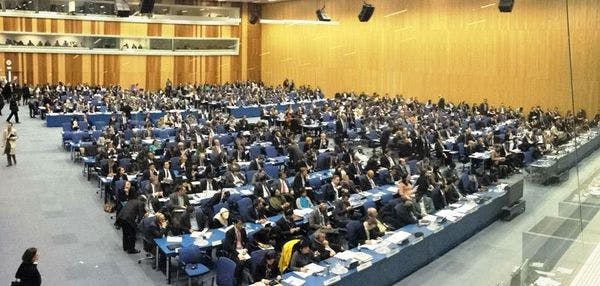CND 2014: Disappointing outcomes but the debate is heating up
From the 13th to the 21st March, UN member states gathered in Vienna for the annual Commission on Narcotic Drugs (CND). This year’s meeting included a High Level Segment in which countries reviewed (the lack of) progress made in drug control over the last five years, and agreed a Joint Ministerial Statement to reflect the challenges and ways forward.
Created with Admarket's flickrSLiDR.
Negotiations on this Statement ran for more than seven months, with countries unable to reach consensus on core issues such as harm reduction, the death penalty, and preparations for the 2016 UN General Assembly Special Session (UNGASS) on drugs. In the end, the final Statement ended up being another bland ‘as-you-were’ outcome from these multilateral discussions – something that was reflected in the relatively low turn-out from high-level officials (there were no Heads of State present, and few senior ministers).
But the statements and discussions at the meeting itself told a different story – one of a strained consensus, increasing frustration, and more open questioning of current policies. During the High Level Segment, statements from Switzerland, Uruguay, Norway, Guatemala, France, Colombia, the Czech Republic, Portugal, India and others all pointed towards the need to develop a health- and human rights-based approach to drug control. Ecuador went even further, calling for a reform of the drug control treaties: “The current UN drug system needs deep changes… We should not believe that one country or that one policy is enough to beat the problem… We need to demilitarise the current approach and accept social and cultural uses within a framework that respects human rights. Ecuador exhorts the world to be focussed on human beings not the substances”.
At the end of the High Level Segment – having failed to secure progressive language on the death penalty in the Join Ministerial Statement due to resistance from Iran, Pakistan, China and others – the European Union made an “interpretative statement” on behalf of 58 countries to declare their condemnation of capital punishment for drug offences. A responding statement from Iran, supported by more than 10 other countries, then stated that “the death penalty is not under the mandate of the CND… It is a criminal matter to be decided by each sovereign state… The death penalty serves as a deterrent against drug trafficking”.
During the ‘normal’ part of the CND meeting the following week, the debates and bad feeling were clearly persisting. In the Committee of the Whole (where individual resolutions are negotiated and adopted by consensus by Member States), frustrations were clear as Pakistan, Egypt and others continued to block any progressive language (even trying to renegotiate text that had been directly copied from the Joint Ministerial Statement, approved just a few days before). Resolutions this year covered topics as varied as recovery, ketamine, education and austerity – and the Russian Federation also submitted one on the role of sport and the ‘Olympic Ideal’ in drug prevention! But each resolution was subjected to tortuous debate, editing and obvious obstructionism.
As a result, the CND negotiations went right to the wire. The resolution outlining preparations for the 2016 UNGASS on drugs was the subject of fierce discussion and debate behind closed doors for much of the week, and compromise was eventually reached late on Friday 21st – long after most of the 275 NGOs present at CND had left.
The reason for the debate was that a number of countries – principally those from Latin America – wanted to make sure that the 2016 UNGASS was allowed to be “a broad and diverse debate without roadblocks or taboos” (in the words of Uruguay), a reference to the frustrations experienced with the Joint Ministerial Statement and the CND in general. The flash-points in the resolution focused on the role of CND in 2016, the role of other UN agencies and bodies, the role of civil society, and the physical location of the preparations (Vienna or New York). In the spirit of consensus – which permeates the proceedings at CND – language was eventually found to appease countries on both sides (the Chair threw off his headphones and everyone applauded when this was finally achieved).
Overall, it is important to look beyond the specific battles over individual paragraphs in resolutions – because the sense of frustration and dissatisfaction in Vienna was tangible and is clearly increasing over time. In a press conference, the UNODC Executive Director Yury Fedotov was asked how CND can claim there is a consensus on drug policy, when the use of certain drugs can lead to execution in one country and be completely legal in another. He glibly replied, “It is a broad consensus”. But even that broad consensus is under increasing strain in the build up to a major review of the current approach in 2016.
For more details about CND, please click on the following items:
- NGO statements at the CND and High Level Segment
- Side eventsorganised at CND, in particular on West Africa, cannabis regulation in Uruguay and the USA, the OAS reports on drug policy, modernising drug law enforcement, scheduling, etc.
- Information about the Informal Civil Society Hearing
- List of approved resolutions
- List of participants
